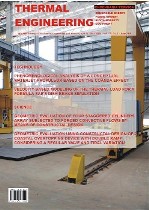VELOCITY-BASED MODELING OF THE THERMAL LOAD FOR A FORMULA SAE’S DISK BRAKE SIMULATION
DOI:
https://doi.org/10.5380/reterm.v18i1.67024Keywords:
disk brake, heat diffusion, FEMAbstract
This paper proposes a methodology for the estimation of a disk brake’s thermal load based on its vehicle’s velocity, where this thermal load serves as an input for a numerical simulation. The load is estimated through a balance between variation in the mechanical energy of the vehicle and the energy dissipated via aerodynamic and rolling drag forces. The RS Racing UFRGS team provided the vehicle’s data and geometry, and the velocity data was taken from a real endurance competition. The thermal load thus calculated is then used as input for a 3D transient finite element model containing the disk and the wheel hub. The results are consistent with what is expected by the RS Racing UFRGS team. Based on the results of the 3D transient model, two more simplified analysis are viable: one in permanent regime, which achieves a temperature distribution within the oscillation presented on the transient model; and also a 2D analysis which can be made by the replacement of the wheel hub with an equivalent global heat transfer coefficient.
Downloads
Published
How to Cite
Issue
Section
License
Direitos Autorais para artigos publicados nesta revista são do autor, com direitos de primeira publicação para a revista. Em virtude da aparecerem nesta revista de acesso público, os artigos são de uso gratuito, com atribuições próprias, em aplicações educacionais e não-comerciais.



